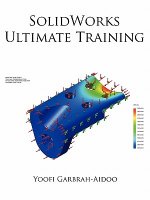
Kód: 01382284
Handbook of Molecular Force Spectroscopy
Autor Aleksandr Noy
Modern materials science and biophysics has increasingly focused on studying and controlling intermolecular interactions on the single-molecule level. The peer-reviewed literature contains an increasing number of studies that eith ... celý popis
- Jazyk:
 Angličtina
Angličtina - Väzba: Pevná
- Počet strán: 300
Nakladateľ: Springer-Verlag New York Inc., 2007
- Viac informácií o knihe

215.82 €

Skladom u dodávateľa v malom množstve
Odosielame za 10 - 15 dní
Potrebujete viac kusov?Ak máte záujem o viac kusov, preverte, prosím, najprv dostupnosť titulu na našej zákazníckej podpore.
Pridať medzi želanie
Mohlo by sa vám tiež páčiť
-

Twilight Garden Coloring Book
14.71 € -22 % -

Higehiro Volume 3
11.73 € -18 % -

Canine Play Behavior
24.08 € -

Wynonna Earp: All In
33.56 € -19 % -

Numbers Behind Success in Soccer
42.93 € -

Chief Data Officer's Playbook
47.46 € -

How Beautiful We Were
18.83 € -13 % -

History Has Begun
25.94 € -9 % -

Bertone Masterpieces of Style
44.58 € -16 % -

Coding for Kids: Python: Learn to Code with 50 Awesome Games and Activities
17.39 € -18 % -

Chess: Master the Ancient Game of Chess! Learn Basic Tactics, Openings & Essential Chess Strategies.
18.52 € -

Porsche 70 Years
50.14 € -9 % -

21st Century Guide to Increasing Your Reading Speed
16.77 € -

Bible Interpretation
20.48 € -

Girls Set the Ground Rule
19.25 € -

Pension Reform in Six Countries
71.25 € -

Gospel of Loki
9.87 € -24 % -

Wolverine - Volume 1: Hunting Season (marvel Now)
20.89 € -

Expressivism, Pragmatism and Representationalism
44.78 € -

Education and Internally Displaced Persons
83.19 € -

Time and the Novel
137.04 €
Darujte túto knihu ešte dnes
- Objednajte knihu a vyberte Zaslať ako darček.
- Obratom obdržíte darovací poukaz na knihu, ktorý môžete ihneď odovzdať obdarovanému.
- Knihu zašleme na adresu obdarovaného, o nič sa nestaráte.
Viac informácií o knihe Handbook of Molecular Force Spectroscopy
Nákupom získate 530 bodov
 Anotácia knihy
Anotácia knihy
Modern materials science and biophysics has increasingly focused on studying and controlling intermolecular interactions on the single-molecule level. The peer-reviewed literature contains an increasing number of studies that either measure the interaction forces directly or use mechanical forces to deform the molecules or trigger structural transitions. Molecular force spectroscopy is the result of unprecedented advances in the capabilities of modern force measurement instruments in the past decade and describes a number of techniques that use mechanical force measurements to study interactions between single molecules and molecular assemblies in chemical and biological systems. Examples of these techniques include atomic force microscopy, optical tweezers, surface forces apparatus, and magnetic tweezers. These techniques typically target a specific range of experimental systems and geometries, but all use mechanical force transducers to apply and detect nanonewton range forcesbetween single molecules in condensed phases.Molecular force spectroscopy measurements have been very important for studies of adhesion and friction forces, where they provided the first truly nanoscale capabilities. Force spectroscopy has been instrumental in understanding mechanical properties and nanoscale dynamics of polymer systems from elasticity to nanoscale phase segregation. In biophysics, applications range from probing protein folding to direct mapping of intermolecular interaction potentials. This volume presents a review of modern force spectroscopy, including fundamentals of intermolecular forces, technical aspects of the force measurements, and practical applications. The Handbook begins with a review of fundamental physics of loading single and multiple chemical bonds on the nanometer scale with a discussion of thermodynamic and kinetic models of binding forces and dissipation effects in nanoscale molecular contacts, covers practical aspects of modern single-molecule level techniques, and concludes with applications of force spectroscopy to chemical and biological processes. Computer modeling of force spectroscopy experiments is addressed as well. In sum, Handbook of Molecular Force Spectroscopy is a comprehensive, authoritative guide to planning, understanding, and analyzing modern molecular force spectroscopy experiments with an emphasis on biophysical research.
 Parametre knihy
Parametre knihy
Zaradenie knihy Knihy po anglicky Technology, engineering, agriculture Mechanical engineering & materials Materials science
215.82 €
- Celý názov: Handbook of Molecular Force Spectroscopy
- Autor: Aleksandr Noy
- Jazyk:
 Angličtina
Angličtina - Väzba: Pevná
- Počet strán: 300
- EAN: 9780387499871
- ISBN: 0387499873
- ID: 01382284
- Nakladateľ: Springer-Verlag New York Inc.
- Hmotnosť: 782 g
- Rozmery: 188 × 264 × 24 mm
- Dátum vydania: 04. December 2007
Obľúbené z iného súdka
-

Materials
87.93 € -

Laser Material Processing
102.65 € -

Schaums Outline of Thermodynamics for Engineers, Fourth Edition
24.08 € -2 % -

Multiaxial Fatigue
48.90 € -

Fourth Phase of Water
39.53 € -

History of Strength of Materials
25.42 € -19 % -

Thermodynamics For Dummies
16.57 € -37 % -

Rotary-Wing Aerodynamics
31.09 € -13 % -

Foundations of Vibroacoustics
107.90 € -

Cosserat Theories: Shells, Rods and Points
354.21 € -

Schaum's Outline of Mechanical Vibrations
29.23 € -14 % -

Mechanics of Materials for Dummies
21 € -20 % -

Mechanics
69.29 € -9 % -

Concrete: Microstructure, Properties, and Materials
125.82 € -26 % -

Fourth Phase of Water
53.95 € -

Advances in Asphalt Materials
346.28 € -

Fluid Mechanics: Fundamentals and Applications
77.63 € -

Turbine Aerodynamics
134.78 € -

Materials and the Environment
62.70 € -9 % -

Fatigue of Structures and Materials
112.64 € -

Statistics of Metal Fatigue in Engineering
54.56 € -

Dynamics of Rotating Systems
278.73 € -

Periodic Table
12.45 € -

Water (R718) Turbo Compressor and Ejector Refrigeration / Heat Pump Technology
167.32 € -

Composite Joints and Connections
408.27 € -

Understanding Aerodynamics - Arguing from the Real Physics
133.03 € -

Liquid
11.42 € -21 % -

SolidWorks Ultimate Training
106.15 € -

Roark's Formulas for Stress and Strain, 9E
134.78 € -

Computational Fluid Dynamics
124.48 € -

Theory of Wing Sections
23.16 € -23 % -

Introduction to Computational Fluid Dynamics, An
103.58 € -

Rocket Propulsion
86.69 € -

Aerodynamics of Wings and Bodies
15.74 € -3 % -

Computational Fluid Dynamics
130.66 € -

Flight Vehicle Aerodynamics
83.91 € -12 % -

Aerodynamics Aeronautics And Flight Mechanics Seco (WSE)
365.64 € -

Mechanical Behavior of Materials, Global Edition
102.65 € -

Artificial Intelligence for Materials Science
228.38 € -

Metal Fatigue Analysis Handbook
125.41 € -9 % -

Applied Computational Fluid Dynamics and Turbulence Modeling
153 € -

Heat Storage: A Unique Solution For Energy Systems
203.25 € -

Engineering Mechanics: Dynamics, SI Edition
96.27 € -

Fundamentals of Laser Powder Bed Fusion of Metals
190.28 € -10 % -

Composite Structures according to Eurocode 4 - Worked Examples
127.78 € -

Manufacturing Processes 2
228.38 € -

What Engineers Know and How They Know It
42.31 € -

Fatigue of Materials
130.76 € -

Magnetic Bearings
316.42 €
Osobný odber Bratislava a 2642 dalších
Copyright ©2008-24 najlacnejsie-knihy.sk Všetky práva vyhradenéSúkromieCookies


 21 miliónov titulov
21 miliónov titulov Vrátenie do mesiaca
Vrátenie do mesiaca 02/210 210 99 (8-15.30h)
02/210 210 99 (8-15.30h)